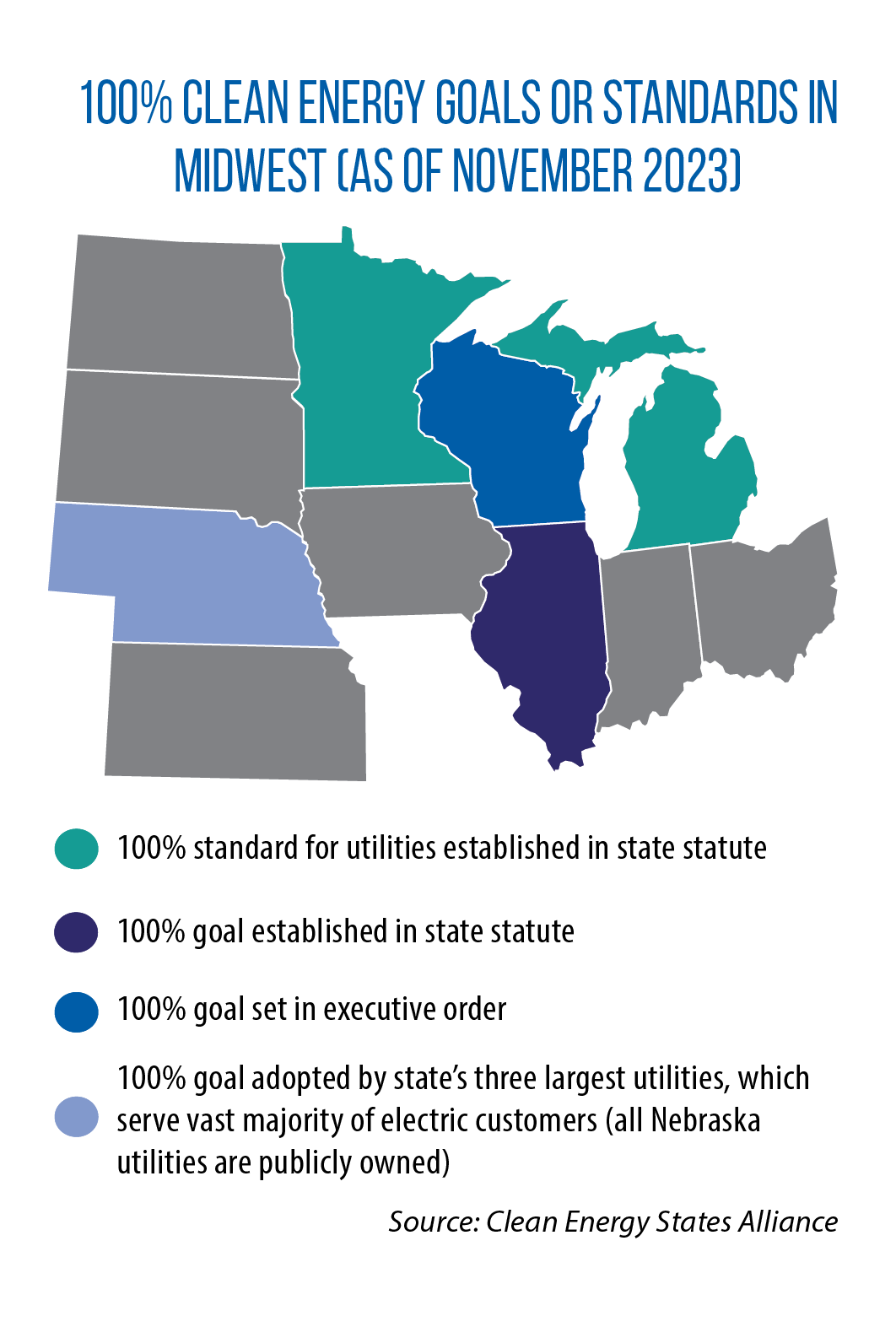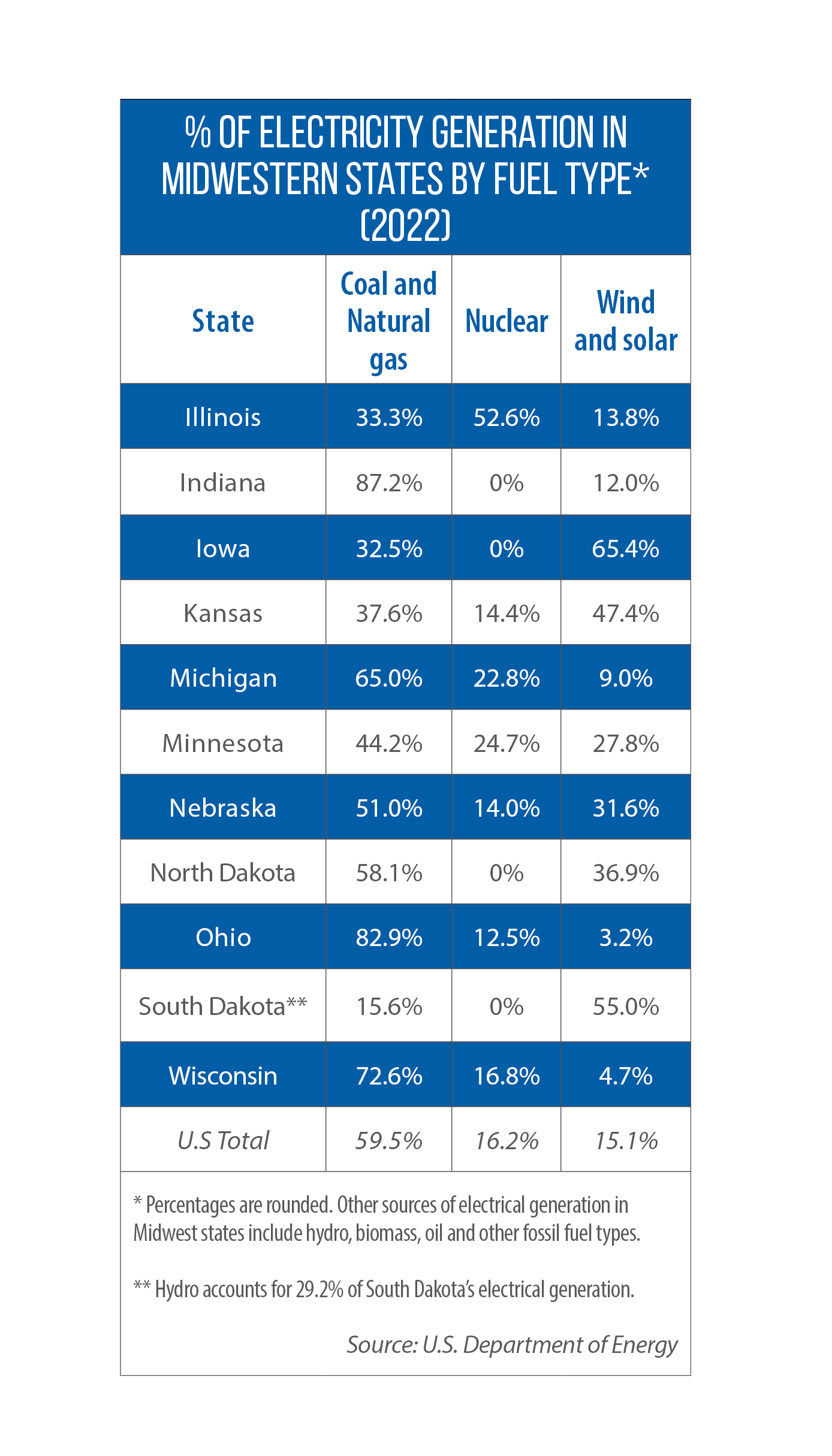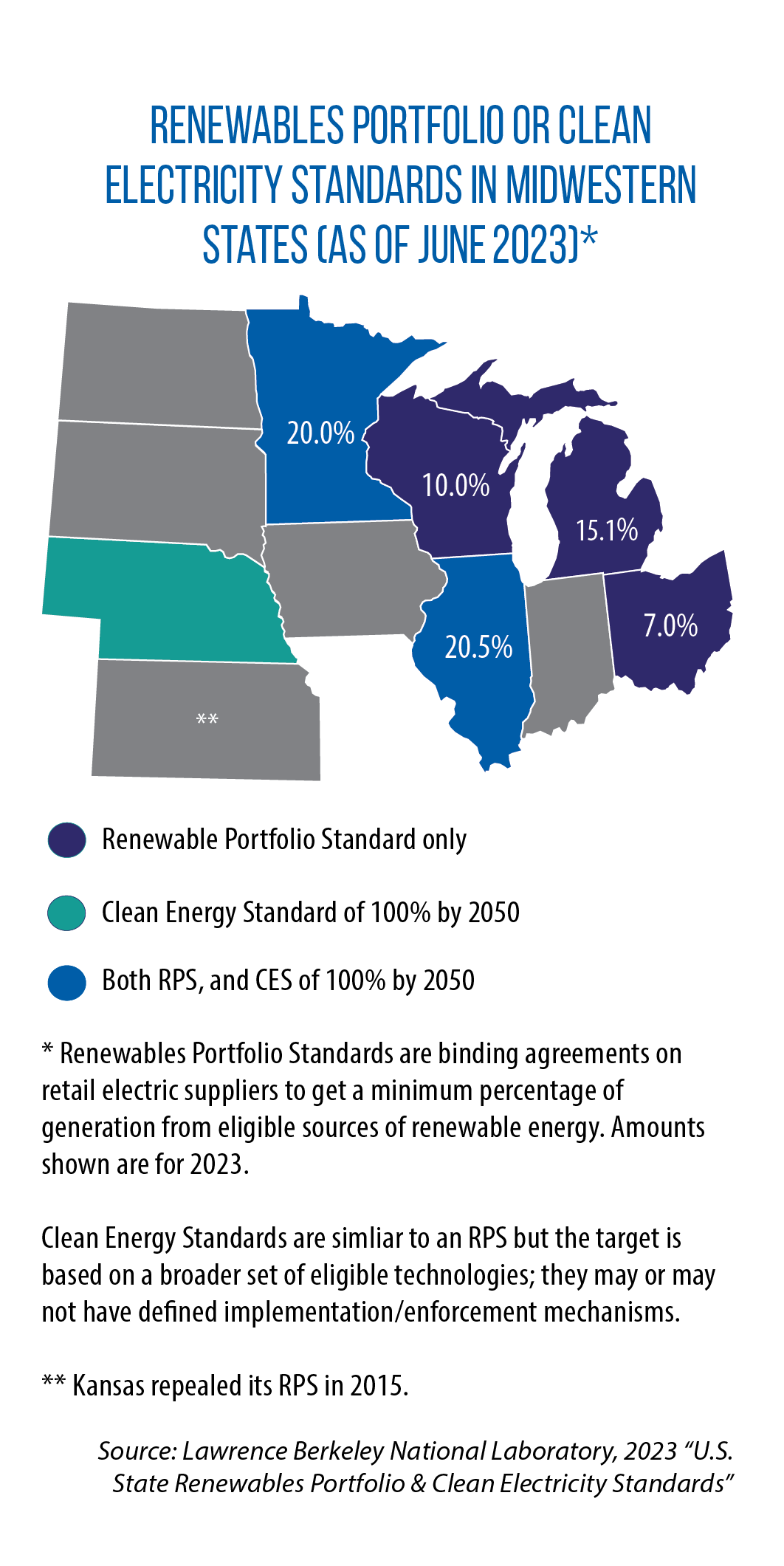Michigan’s new clean energy laws include a 100 percent clean energy goal, but what does that mean in practical policy?
Among an early-November blizzard of clean energy-related bills approved by Michigan legislators is one requiring electric utilities to source 100 percent of electricity generation from renewable sources by 2040.
Signed by Gov. Gretchen Whitmer, SB 271 makes Michigan the third Midwestern state to set a 100 percent clean energy standard in statutory stone — joining Illinois and Minnesota — and the 17th nationwide to do so. Four other states, including Wisconsin, have declared 100 percent clean energy goals by an executive order.
SB 271 also sets a statewide energy storage requirement of 2.5 gigawatts of utility-scale battery capacity by 2030 to store wind and solar power, making Michigan the second Midwestern state (after Illinois) to do so. The new law is part of a five-bill package that codifies myriad provisions in Whitmer’s September 2020 executive order that called for a completely carbon-neutral state economy by 2050.
Others will likely be part of legislation in 2024, says SB 271’s main sponsor, Michigan Sen. Sam Singh.
“We wanted to be able to codify a lot of those ideas [in Whitmer’s order],” Singh says. “A lot of states have begun the process of working toward 100 percent clean energy, this provides stronger guidelines to our utilities and a more aggressive timeline.”
That timeline includes an interim benchmark of 80 percent clean energy-sourced electricity by 2035.
To meet the storage goal, utilities must petition the Michigan Public Service Commission by the end of 2029 for approval to build storage facilities, along with plans to build them.
Each utility’s share of the statewide storage capacity total will be based on its annual average contribution to Michigan’s in-state electric load for the five-year period immediately preceding the filing of those plans.
Michigan’s new law is similar to Illinois’ 2021 Clean Energy & Jobs Act and Minnesota’s 2023 energy omnibus bill.
Illinois’s law (SB 2408) includes interim benchmarks of 40 percent by 2030 and 50 percent by 2040, and directs the Illinois Commerce Commission to set energy storage goals to be met by 2032 for all utilities serving more than 200,000 customers.
Minnesota’s SF 4 sets an interim of 80 percent by 2030 and raises the state’s renewable portfolio standard — the amount of electricity that must be generated by renewable technologies — to 55 percent by 2035, but doesn’t set energy storage requirements.
Clean energy goals are the latest development from a trend that began in 1983, when Iowa enacted the nation’s first renewable portfolio standard.
Minnesota adopted one in 1994, Wisconsin in 1998, then Illinois in 2007 and both Michigan and Ohio in 2008, and Kansas in 2009.
Why set clean energy standards?
Setting clean energy goals or standards in law is important because they give clear direction to utilities and energy developers, says Warren Leon, executive director of the Clean Energy States Alliance, a bipartisan coalition of energy agencies in 18 states that advocates for the rapid expansion of clean energy technologies.
A law is more permanent than an executive order, thus it signals to energy markets that your state has better stability in its renewable energy sector, Leon adds.
Michigan Sen. Sean McCann, chair of the Senate Energy & Environment Committee, says legal standards also ensure an energy transition actually happens. While the state’s two biggest utilities (DTE Energy and Consumers Energy) are working aggressively to meet self-set clean energy goals, legislators weren’t inclined to leave that to them alone, he says.
“We can’t leave things to hope and wishes,” McCann says.
Singh agrees, adding Michigan’s version provides flexibility by letting the Public Service Commission review and extend deadlines if it determines circumstances warrant a delay.
Another bill signed into law, HB 5120, wasn’t part of this legislative package, but is related.
Like Illinois’ new siting law (HB 4412), it shifts siting authority for wind, solar and energy storage projects from local governments to the state (the Michigan Public Service Commission) and bars local jurisdictions from imposing requirements more restrictive than those in state law.
“There was a strong sense that we needed to review our siting process” and treat renewable energy infrastructure the same as other critical energy infrastructure like pipelines, Singh says.
Of all Midwestern states, Illinois has the shortest path to 100 percent clean energy — if clean energy is defined as not carbon-based, which would include nuclear power. In that case, 66.4 percent of electricity generation in Illinois was fueled by clean energy in 2022, according to the U.S. Energy Information Administration.
While the definition of clean energy varies from state to state, Leon says its definitions generally fit within a framework of decarbonization.
“We say we want to help you learn from other states, we want to help you learn about best practices, we want to help you be successful,” he says, “but it’s your decision on how to proceed and which direction you choose to go.”
NEW LAWS IN MICHIGAN’S ‘CLEAN ENERGY FUTURE’ LEGISLATIVE PLAN
- SB 273 limits energy waste benchmarks to 1.5 percent of the previous year’s total megawatts for electric utilities and 0.875 percent for natural gas utilities (starting in 2026).
- SB 277 allows farmers to use land for solar projects without jeopardizing state income tax credits under Michigan’s Farmland & Open Space Preservation program.
- SB 502 requires the Michigan Public Service Commission to approve financial incentives for utilities to sign power purchase agreements with third parties for clean energy or energy storage.
- SB 519 creates the Community & Worker Transition Office in the Department of Labor & Economic Opportunity to help workers and communities shift from fossil fuels to renewable energy resources.
